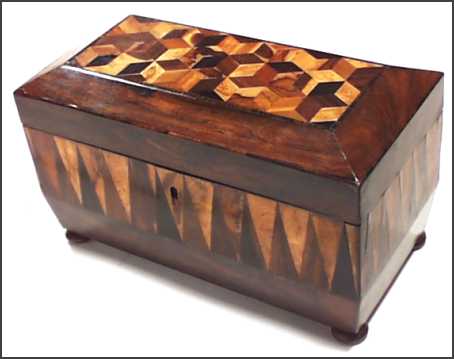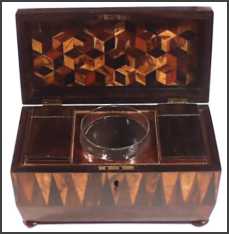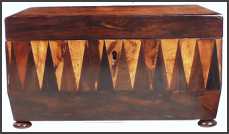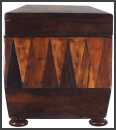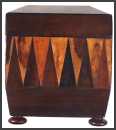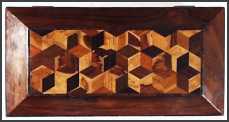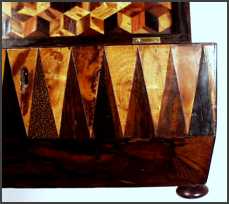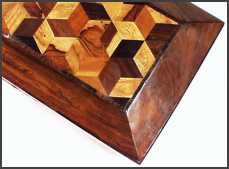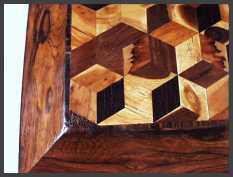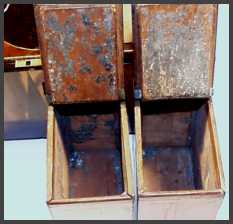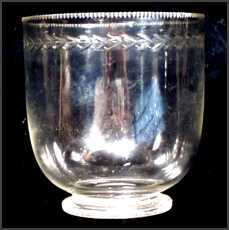| This is an exceptional example of a very important group of tea caddies
produced in the first three decades of the 19th century. are of course
the Tunbridge
Ware boxes.
The shape is similar to other caddies of the period with the exception
that the nature of the decoration precludes extreme bombe or concave shapes.
In the first thirty years of the 19th century, Tunbridgeware caddies
were usually made in rosewood veneer with Van Dyke (elongated triangles)
and cube pattern parquetry decoration.
The earliest ones, like this, do not include mosaic inlays.The mosaic
first the 1830s mostly as borders. In the 1830s and 40s the early patterns
were combined with Berlin woolwork designs in mosaic marquetry. Turned
feet were usual, but not handles, which would interfere with the decoration
which, continued on all sides. |

